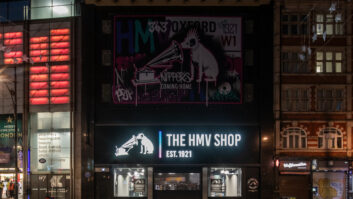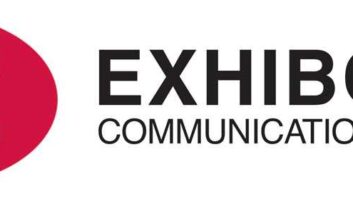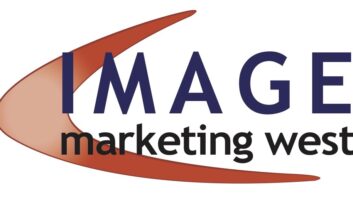In this exclusive extract from the audio section of our inaugural Pro AV Technology Outlook report (free to download here), we talk to a panel of experts on the pro audio installations landscape. Contributors include Emma Bigg, AV designer and strategist at Octavius RE, Ltd – one of the speakers at our upcoming, free, pro audio webcast, taking place June 29 at 2pm BST – Brad Price, senior product marketing manager, Audinate; Roland Hemming, audio consultant at RH Consulting; and Craig Collin, RSM, systems group, Shure UK, sponsors of the forthcoming pro audio webcast.
You can sign up to our free webcast, Now Here This: The Importance of Audio, here.
Prior to the pandemic, what technologies or trends would you say were having the most enabling impact in audio systems integration?
Emma Bigg (EB): I think Microphone technology was having a big impact. Developing the technology and software to take microphones off the table and combine into a large array rather than lots of individual microphones, with steerable coverage was transformative. I think lots of people would say that the placement and use of microphones, as well as processing, was a weak point in many systems so implementing this new approach lifted the quality of experience in many different applications.
Beam-steering technology and highly-directive column speakers saw an upsurge in deployment as it allowed you to install speakers in places that perhaps were impractical before for aesthetic or acoustic reasons.
Immersive audio DSP was starting to be more widely integrated into live performance and meeting room/auditoria audio systems, transforming the listener experience, creating intimacy in large spaces, and improving acoustics in challenging rooms.
In general, I think there was a rising appreciation that audio was a critical element of any successful AV system and that audio and visual working harmoniously together with equal importance placed on each discipline was key to giving users the best experience. And this was felt across many different sectors.
Brad Price (BP): For Audinate, the biggest positive impact was the continuing growth of AV networking worldwide. We’ve greatly expanded the ways in which we offer our technology, and these alternatives have been enthusiastically embraced by the AV industry. The biggest single area of that growth is probably that of software-based AV products, essentially purpose-built computers that serve the functions previously reserved for dedicated hardware. We believe that trend will continue for years to come.
Craig Collin (CC): Because of the shift towards collaborative environments (including remote participation) I feel that audio technologies that specifically focus on maintaining a high degree of intelligibility have become a critical development area. Being able to hear someone clearly is often taken for granted but with virtual meetings, if participants have difficulty hearing another person this can be very distracting and because of this we would likely see productivity and engagement fall.
Products like our Microflex®Advance™ (MXA) Array Microphones provide easy access to this intelligibility with very little interaction from room participants. And for more specific talker requirements we can then look at dedicated wireless microphone systems that are focused on a specific presenter in the room.
Again pre-pandemic, what would you say were the biggest areas of challenge in terms of AV technology development or deployment in this field?
CC: Meeting-space technology is evolving very quickly, and general room use is changing too. Gone are the days where every meeting room is in a fixed format and with permanently installed furniture. Rooms are now multi-purpose and the AV solutions in these spaces must be adaptable. With dynamic rooms comes dynamic room noises and any audio front-end needs to have the scope to deal with those changing scenarios. Modern solutions like the IntelliMix DSP platforms built into our MXA series microphones, makes dealing with challenging audio simple and dependable. They will actively adapt noise and echo-cancelling abilities to match the room requirements whilst being able to automatically mix the microphones in use to create a constantly high-quality output for the participants at the far end.
EB: One of the main issues was the apportioning of budget and preference to invest more in visual products compared with audio. It was often felt by integrators that audio was an afterthought, and this was where more compromises would be made if costs needed to be reduced or the speakers didn’t fit in with the design aesthetic.
Another challenge was that there were simply not enough people designing solutions who were skilled in audio design or who had the breadth of knowledge to explore a range of solutions and products versus just sticking with what they had used before.
And thirdly, far too many end users were prepared to use prosumer and consumer products to save on costs without proper consideration as to the limitations they were introducing into their solutions.
BP: The ongoing challenge is to continue converting the world of analogue and point-to-point digital AV to networking. Even in 2021, there are installers, integrators, IT managers and system designers who are still more comfortable with legacy technologies despite the many limitations imposed. As fellow human beings, this reluctance is understandable and represents an ongoing challenge for all networked AV technologies.
What effect has the pandemic period had (and is having) on your area of the market in terms of accelerated technology adoption/deployment, or any other significant areas?
Roland Hemming (RH): The pandemic suddenly made a lot of people question their relevance to markets they had served for many years. Whilst things may return to normal, the lessons learned have enabled us to be far more imaginative in the solutions we can offer. I’m talking to a small live music venue about introducing streaming of concerts. Not only does this give them an additional source of revenue and a much wider audience for gigs, it turns them into a content producer with facilities to rent and a catalogue of content. Even at a tiny grassroots level you can re-think business models.
Many people are adapting. Suddenly, AV integrators are becoming broadcast integrators, rental companies are getting into installations. Some of this won’t work out, but for others they’ll ask the question why they weren’t doing this years ago.
BP: We’ve seen a shift in focus away from live sound applications to those better suited for a pandemic: expansive conferencing solutions, home recording studios, socially distanced broadcasting from homes, and innovative solutions that allow musicians to collaborate without risk. We’ve seen a big increase in the use of AV networking in higher education, especially in music programmes. They’re using networking to bring together students for music performances even when they are separated by hundreds of kilometres.
CC: Many of our customers in the education, corporate and government sectors continued conducting business in some capacity throughout the pandemic. By offering a range of products – from high-quality array microphones and digital signal processing for meeting rooms, USB mics and headphones for the home office – we helped our customers in these markets continue with their business operations and keep communicating with high-quality audio, providing audio solutions that help their employees collaborate effectively together, no matter where they are.
EB: I think the biggest change is that with everyone being forced to work remotely there has been a greater appreciation of the importance of good, natural audio whether it’s via a Zoom call from your laptop, a meeting room, or other impromptu space. It has also highlighted the variety of factors that impact audio quality and how the control of peripherals used by staff needs to be managed centrally and properly coordinated.
What would you say are the AV technologies or trends that are going to have the most profound impact in pro audio installs in the coming years, and why?
CC: Technologies like the MXA710 Linear Array, MXA310 Table Array and 910 Ceiling Array mics are helping to enhance the communications of students, teachers, colleagues and clients around the world, from home offices to meeting spaces and lecture theatres. We are seeing an active shift in both the corporate and higher education sectors. Where wireless microphones would typically be the primary audio source, these rooms are now shifting towards passive non-touch solutions to create a safer and more inclusive environment in which to learn and collaborate. The value of high-quality audio in enabling more effective communication is paramount to keeping people connected remotely and in the event space.
RH: In the future, if people are going to travel, it needs to be worthwhile. We need to deliver AV that goes well beyond what is just good enough to get the message into the home. Anything that significantly improves how people communicate will come to the fore, along with technology that enables the most engaging experience. Despite all the benefits of absorbing content from home, you can’t beat just ‘being there’, so the most important question to ask is whether the technology they are deploying really makes the trip worth it.
BP: The biggest impact over the long run remains the same as it was before: the ongoing transition of AV from hardware to software. As computing power continues to grow while costs and size decrease, more and more products that we think of as hardware-based will in fact be specialised computers running commodity processors. This opens countless possibilities for AV of the future, and networking is at the core of the concept.







